Part 3: How do I find my Hikvision device and edit its network settings?
You probably want to be able to view your camera feeds remotely wherever you are; either in a web browser, the iVMS-4200 software, or the Hik-Connect mobile app. All IP CCTV devices communicate over your LAN (local network) and have a unique location on the network. So, you will need to be able to locate where the device you want to view is and make sure it has the right settings for it to work on your LAN. You will then be able to access the device from a PC or mobile device, and connect it with the rest of your CCTV system.
Please follow the steps beneath to find and correctly set your Hikvision device's network settings.
Step 1:
The first step is to work out if you need Hikvision's SADP tool or not. If you only need to discover and access an NVR and some Plug and Play cameras connected directly to its PoE ports, then you don't need to use it.
If you aren't using the SADP tool:
Or, on the NVR's local GUI (Graphical User Interface – when operating the recorder from a connected monitor and mouse), go to:
System → Network → TCP/IP
Here, you can view and change the NVR's network settings to match your LAN which is explained in step 2 – you can then ignore the rest of the steps.
If you are using SADP:
If your cameras are connected to your LAN, rather than to an NVR's PoE ports, you will need to install the SADP tool. This scans for all Hikvision devices on your LAN by their MAC addresses. Now, follow steps 2-5 below.
Step 2:
You now need to identify some of your LAN's settings, which you need to set to match on your devices.
From a Window's PC, you will need to use the Command Prompt tool to find these.
If you're using a Mac, then you can find these by launching System Preferences, and then going to:
Network → Advanced (make sure your Wi-Fi/Ethernet connection is selected on the LHS) → TCP/IP
Make a note of the following numbers, as you will need to use them when changing your device's network settings:
IPv4 Address – This is the IP address of the computer that you are using. This address is therefore already occupied, so you will not be able to assign any other devices to this specific address. The digits after the final decimal point indicate where the device is located within the range of your local network, which spans 1-254. You'll need to change the number after the third period (or full stop/dot) to something that is between “1” and “254” and not already occupied by another device on the LAN.
NB – Please see these guides for instructions on checking if a proposed IP address is occupied:
Subnet Mask – This shouldn't need to be changed on the NVR, it will usually be “255.255.255.0”.
Default Gateway – This is the IP address that's been assigned to your router. Any device being added to your system needs to be within the range of your gateway in order to be discoverable.
Step 3:
Now, launch the SADP tool again. It should show a list of all the Hikvision devices on your local network and their default network settings. Provided the device is being powered and has a connection to your LAN, then it will show up here. You can also alter the device's network settings here, and check things like the model number, serial number, the firmware version installed on it.
NB – Remember that any camera that is directly connected to your NVR's PoE ports will not show up in SADP. This is because the NVR hides any cameras directly connected to it from SADP on its own “subnet”, which is separate from your local network. Don't worry though, as you won't need to change the settings for these cameras.
Step 4:
Tick the box beside your device to view and edit the network settings.
If the device hasn't yet been connected to the network then it will show as “Inactive”. You will be asked to set a password for it when you click the tick-box for it. For more instructions on activating your device, please see Part 6.
Once activated, ticking the box beside your device will change the network settings in the “Modify Network Parameters” window, so that they match your LAN. You need to make sure that you enter the password for that device before clicking “Modify” for these changes to be saved.
Step 5:
Check that these changes have been reflected in the SADP device table – you may need to wait a few minutes before refreshing. If they have, then you should be to carry on with getting this device connected to the rest of your system.
NB – If you aren't the camera's first owner then you will need to perform a hard reset on it. This will reset the device to its inactive factory state so that you can set new password by activating the camera in SADP. Once this has been done, SADP will allow you to modify each network setting edit the network settings to match your LAN so that you can use the device standalone or add it to your NVR remotely.
Part 4: How do I add a Hikvision device to my NVR?
There are a couple of methods for getting your IP camera connected and recording to your NVR:
Plug and Play – This is the most popular and simplest method for smaller setups, as all you need to do is plug your camera straight into the PoE ports in a Hikvision NVR. The NVR will then do the rest of the work. Please note that for Plug and Play to work, the device will need to be inactive or activated with the same password as the NVR.
Remote connection via IP – If you can't have a wired connection to the NVR, you can instead remotely add a camera on the same network as your NVR to it using the camera's IP address. For this to work, you will need to make sure to do two things:
1. Replace the power supply that would normally come from the NVR'S PoE ports. Using a PoE switch or injector is usually the best way, as it means you can still add power to the device over the same ethernet cable used for everything else. If not, most will let you connect to a separate PSU.
2. You have connected the camera and NVR to the same LAN and that its network settings are correct for the LAN's range.
The following steps will guide you through adding new devices using both of these methods. Part 1 covers doing this on the NVR's local interface (GUI) and part 2 covers how to do this remotely using a web browser.
Method 1 – Via the NVR's GUI:
Step 1:
On the NVR 4.0 menu at the top of the screen, go to:
Camera → Hover over the desired channel → Click on ‘Edit' (small icon in the bottom-left corner of channel thumbnail)
Step 2:
An edit window should appear, fill out the fields to add your camera as follows:
Option 1 – Using “Plug and Play”
Connect the camera to the corresponding PoE port number on the NVR (I.e. D1 corresponds to port 1). Then, just select “Plug-and-Play” from the “Adding Method” dropdown, and then click OK to add the camera to that channel – the camera feed should appear after a few seconds to confirm that it's been picked up.
Note – If you haven't activated and set a password on the device in SADP, then the IP address should automatically work. The password will be the Activation Password set on your NVR in the initial setup.
Option 2 – Adding manually via IP
Change the “Adding Method” to “Manual”, which will let you alter the other fields.
Now edit the other fields to point your NVR to the camera's location on the network, like below:
Adding Method – Select “Manual”.
IP Camera Address – Enter your camera's IP address here (as explained in the introduction, this will need to match the range of your LAN).
Protocol – Select the device's manufacturer if it is on the list, or “ONVIF” if it is an ONVIF conformant product.
Management Port – “8000” by default will work fine, or whatever you've set the device's Server Port to if it's been changed.
Channel Port – This refers to the channel that you want to add the camera to, so leave this as the corresponding number for the channel that you would like to edit.
Transfer Protocol – Set this to “Auto”.
Username – The username you set up when activating the device, usually “admin”.
Password – The camera's password, which you will have set when it was first activated.
Use Channel Default Password – If you have assigned the NVR and camera the same password during their activation, then you tick this box. This will use the NVR's password to add the camera and will save you from entering it again in the future.
Enable IP Camera Time Sync – Tick this, as it means the camera will synchronise with the time set on the NVR.
Use Default Port – You can leave this unticked, as you have specified the management port already.
Verify Certificate – Leave this box unticked too.
Click OK to save your changes, the NVR should pick the camera up after a few seconds and show the feed on that channel's thumbnail to confirm this.
Step 3:
To rename the camera, go to:
Camera → Display
Then, select the camera's channel from the dropdown, and use the field below to set a new name.
Click “Apply” to save your changes.
Step 4:
You may want to rearrange the Live View screen to show the new camera on a particular tile. To do this, first, go to:
System → Live View → View
Then, select the output port for your connected display that you would like to show the camera on, click on the selected tile and then double-click on the new camera to add it to that tile.
You can select different layout options, or create a customised layout using the toolbar at the bottom of the page.
Click “Apply” to save the new layout.
To check the new layout, launch “Live View” using the NVR's main menu, and then select that layout using the toolbar in the bottom right-hand corner.
Method 2 – In a web browser:
Step 1:
Browse for NVR's IP address in a web browser, and log in with your username and password for it.
Step 2:
Now, navigate to:
Configuration → System → Camera Management → IP Camera
You'll be shown a table of all the NVR's channels, showing which are occupied by cameras, and which aren't.
These channels normally correspond to the same-numbered PoE ports on the back of the NVR.
Click on the channel that you want to add your device to, and then the “modify” button above the table.
Step 3:
A window titled “IP Camera” should appear allowing you to change the “Adding Method” and “IP Camera Address” set for that channel.
If you haven't already, you will need to make sure that the camera has a valid IP address and correct network settings for your LAN's range.
Option 1 – using “Plug and Play”:
You just need to make sure that:
Note – If you haven't activated and set a password on the device in SADP prior to connecting it to the NVR, then the IP address should automatically work and the password will be the “Channel Default Password” set on your NVR in the initial setup (see step 7 here)
Option 2 – Adding manually via IP:
Change the Adding Method to Manual, which should let you alter the other fields.
Now alter the other fields to point your NVR to the camera's location on the LAN, like below:
IP Camera Address – Insert the camera's IP address
Protocol – Select the brand of your camera here, or ONVIF if it is ONVIF conformant and the manufacturer doesn't appear in this list.
Management Port – This is the camera's network port, which is usually 8000 by default.
Username – The username that you set for the camera, which is usually “admin”.
Password – The password assigned to the camera upon activation in SADP. If you have automatically activated the camera by plugging it into your NVR's PoE ports, this will the the “Channel Default Password” set during the NVR setup.
Confirm: Retype this password.
Transfer Protocol: This is fine for you to leave as “Auto”.
Green ticks should appear beside each field to indicate that what's inside is valid. Once completed, you can click “OK”:
The “Security” column should be “Strong” and “Status” should change to “Online” on the “IP Camera” page – If they do, then you're finished, just return to the Live View page to check that the camera's feed is now visible.
Note – Clicking the “Start All Live View” button in the toolbar at the bottom of this page will show all of your working cameras feeds at the same time.
Part 5: How do I set up the recording schedule of my Hikvision Device
You will now need to set up your recording schedule to something that suits your needs for each camera, which is key to have set correctly. If it isn't, you might miss key sections of footage, which could, of course, prove very costly.
There is a range of recording types to choose from. You will need to understand what each means before you begin, these are explained below:
Continuous – The camera will record continuously. If you want the camera to record 24/7, you would fill the grid for the whole week with this option.
Motion – Any time period filled out with this option will only be set to record during instances of motion detection.
Alarm – The camera will only record during instances when an alarm is triggered. This applies to both alarms that you have set up on your IP CCTV system that you have connected to the device's alarm in ports, such as the VCA Events, or external alarms.
Motion | Alarm – This means that recording will be triggered when either motion detection is triggered, or an alarm device connected to an alarm in port is triggered.
Motion & Alarm – This option just means that the camera will only record when motion detection and a device connected to the alarm in ports are triggered simultaneously.
Event – This is for event-based recording only, so the footage will only be recorded during any VCA event trigger, except motion detection.
POS – This is only supported by I-Series NVRs. You would select this option if you had a “Point of Sale” alarm set up and only want a camera's footage to be recorded when this is triggered.
Method 1 – In a web browser:
Step 1:
Browse the IP address of the device that will be managing/storing your recordings in an internet browser and log in to it. If you are using an NVR and recording to the onboard hard drives for each camera that's connected, then this is the device that you will need to log in to.
If your cameras are not connected to an NVR, then you will need to log into the camera directly to set its recording schedule. You will need to use the virtual host feature on your NVR to log into any camera that is connected to its PoE ports, or the camera's IP address if it is connected to your local network instead.
Step 2:
Navigate to:
Configuration → Storage → Schedule Settings → Record Schedule
You should see your recording schedule in the form of a grid for the week, which is divided into hours.
Select the camera that you want to configure the schedule for from the dropdown menu if on an NVR.
Step 3:
Tick the “Enable” box, which is how you turn the shown schedule on or off:
Step 4:
Now, select the recording option you would like to use for a period from the following options:
Step 5:
Click and drag across the section that of the schedule to which you want to apply the chosen recording option. You can use as many different recording options as you like here.
Step 6:
Finish drawing on the recording schedule for the rest of your week like this.
If you click on a period once it's drawn, you can see the exact start and end time for it, and more precisely adjust these if need be.
Step 7:
Click “Copy to…” if you would like to use this same schedule for any of your other cameras.
Select these in the popup that appears, and then click “OK”.
…..
Step 8:
Once you're happy with how your schedule looks, click “Save” to finish and apply the schedule to your camera(s).
Method 2 – In the NVR's local GUI:
Step 1:
Using the menu at the top of the screen, go to:
Storage → Schedule → Record
You will see your recording schedule as a grid for the week that's segregated into hours.
Select your camera's channel from the “Camera No.” dropdown, and then tick the “Enable Schedule” box.
Step 2:
You have a couple of options here for actually establishing your schedule…
Option 1:
Drawing on your schedule is the quickest way.
You will need to click on one of the colour-coded recording options, and then click and drag your mouse across your desired time period to draw your schedule on this timeline.
When you're done setting up your schedule for the week, click “Apply” to save it. Make sure you have not left any small gaps in the schedule.
Option 2:
Click “Edit” on the right-hand side of your schedule.
This will bring up a window in which you can set your schedule for each day by using the top dropdown.
Ticking “All Day” means that the recording “Type” that you select will be used for the entire day.
Unticking “All Day” will allow you to configure your times in the eight boxes below. Each of these boxes represents a different recording type and time period for that type to be active.
For example, to set the camera to record continuously from midnight and midday, and during periods of motion detection only for the rest of the day, you should:
Set box one's “Start/End Time” to “0:00-12:00”, with “Continuous” set as the “Type”
Set box two's “Start/End Time” to “12:00-24:00”, with “Motion” set as the “Type”
You can then use the “Copy” button to quickly copy the schedule for this day across to others in the week by ticking the box for that day, and then clicking “OK”.
When finished, click “Apply”, then “OK” to return to the main recording schedule page.
Step 3:
If copying the schedule to other days, then specify which in the “Copy to” window by ticking the boxes for those days, or “Select all”, which will copy it to every other day in the week.
Click OK to confirm this and return to the “Edit” page, and then “OK again” to apply these changes and return to the main “Record” menu.
Step 4:
To save time by copying this same schedule to other cameras connected to the NVR, click “Copy to” on the “Record” page.
Alternatively, If you need different schedules for the other cameras, then just click “Apply”, which will save your new schedule for that camera.
Step 5:
In the “Copy to” window, use the tick boxes to specify the channel assigned to each of the cameras to which you would like to copy your new schedule.
Ticking the “IP Camera” box will select all of the NVR's other channels.
Click “OK” to apply the schedule to the selected channels, and then “Apply” on the record page to save these changes.
Finally, it's always wise to check the “Playback” menu to confirm that the cameras are recording as you've set them to…
Advanced recording schedule settings:
On both interfaces, you will see an “Advanced” button for access to further settings. A window with a list of options will appear when you click this, all of these are explained below:
Record Audio – Select this box if your camera has a microphone set up and you would like its audio feed to be recorded as well as the video. Bear in mind this will eat into storage space and bandwidth, so make sure you have enough available if you're considering enabling this option.
Enable ANR – This is a nice security feature, but will need an onboard microSD card installed in your camera for this setting to work. If ticked, your camera will automatically continue recording to this memory card if it loses connection to your network or NVR at any point.
Pre-Record – This option allows you to set the period of time before a VCA event or alarm trigger that your camera will record for. E.g. If “Motion” is chosen for the recording type, “5s” means that the camera will record for 5 seconds before any motion is detected.
Post-Record – Similar to above, but instead refers to the length of time after said event or alarm that the camera will continue to record.
Stream Type – This is the stream type that you would like to be recorded. The “Main Stream” is typically used here as it is can be set to the highest video quality.
Video/Picture Expiry Time – This just refers to the length of time that you would like any recorded footage to remain saved to the NVR's HDD before it is automatically deleted. If “Os” is selected, the footage will be stored on the HDD indefinitely, or until the drive fills up and begins to overwrite the oldest recordings on it.
Once you're happy with these advanced settings, click “OK” followed by “Apply” to save them.
.
……
Part 6: How do I activate my Hikvision device?
As a security measure, any device that is brand new or has been reset to its factory settings needs to be “activated” with a strong password before it can be used.
Devices running old firmware may still be using the default Hikvision password of “12345”. If this is the case for your device, you should set your own password on it and update its firmware to the latest available as soon as you can.
To activate your camera, you will need to make sure that it is connected to your LAN and being powered (by either a PoE switch or a separate PSU). Then, follow the steps below to activate your camera using Hikvision's SADP tool on a PC.
Note – This section only really applies to cameras that you plan to add to your NVR across the network. If you're using the Plug and Play feature to connect your device, you don't need to worry about activating it. When you plug the device into your NVR, it will be automatically activated the given the Activation Password and Username set during the initial NVR setup.
Step 1:
Install Hikvision's SADP Tool and run it on a PC that is on the same network as the inactive device.
Step 2:
You should see a list of all the devices on the network, any that have not been activated are marked as “Inactive” in the “Status” column. Select the inactive device from the list by ticking the corresponding box on the left.
Step 3:
You should then be prompted to set a password for it in the right-hand flyout:
Set and confirm a password that SADP classifies as strong – you should use a combination of at least three of the following in your password for it to do so:
If you have existing devices in your system, then using the same password as these means you don't need to keep a list of passwords for each device, as well as saving you time during future configuration.
Step 4:
You now need to change a few of the “network parameters” in the right-hand side flyout so that the device can be accessed on your network.
Firstly, change the Gateway and Subnet Mask to the correct ones for your network.
Step 5:
Now, you need to set a unique IP address for your new device, which also needs to be within your LAN range. This is explained in detail in the guides linked in step 3, but if your gateway address is “192.168.1.1”, then the device will need an address within the range of “192.168.1.x” where “x” is any unused address (including the gateway) between 1 and 254.
If you don't need to set a specific IP address, or still aren't sure which ones are available to use, then you can always tick the Enable DHCP box. This will get your router to automatically assign a working IP to the new device. Once the IP address changes (after you click modify), make a note of it and untick this box again to stop it from changing in the future.
Note – DHCP will only work if the Gateway field is correctly set for your network.
Step 6:
Finally, type in the password that you activated the device with during step 3, and then click “Modify” to save your changes.
You'll see a “Parameters modification completed” popup to confirm that the password is correct and your changes have been saved:
Now that the camera has been activated with the correct network settings, it can be added to one of your NVR's channels. For the instructions on doing this, please see Part 4.
Part 7: How do I reset the password of my Hikvision device?
There is a good chance that you will need to reset the password on one of the devices in your Hikvision setup at some point. The best advice we can offer to prevent this is to use a password manager tool or keep a safe record of your passwords, and to keep the passwords across your devices consistent.
If you do need to set a new password on a device, then you have a few options. Which one of these you take depends on whether you still know the existing password, and whether you have extracted the GUID password reset file or set security questions during the device's initial setup. A few of these methods are covered below:
I need to reset my password and still know my existing password:
Step 1:
Connect to your device in a web browser, and go to:
Configuration → System → User Management
Note – If you are changing a password that is directly connected to your NVR, you will need to use the NVR's Virtual Host feature to connect to the camera.
Step 2:
You'll be shown a list of all the user profiles that have been created on the device. Choose the one that you need to change the password for from the list, and then click on “Modify” at the top of this list:
Step 3:
Enter your current password in the popup, and then set your new password in the fields below – you will need to retype this to avoid you setting it incorrectly before you can continue, green ticks will appear when these passwords match. When they do, click “OK”:
Note – If you would like to change the NVR's “Default IP Camera” password to this also, which is the password assigned to any inactive Plug and Play cameras, then tick the “Use as Default IP Camera Password” box.
If you would like to change the password of the already directly connected cameras to this new one as well, tick the “Sync IPC Password” box below as well.
Your password has now been changed, which will be confirmed with a “Save succeeded” message. You may need to log back into the device after this step.



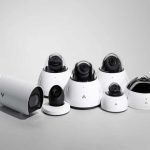
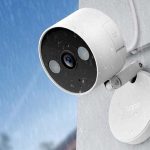

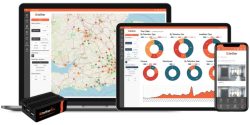
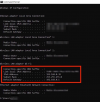
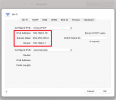
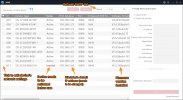
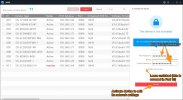
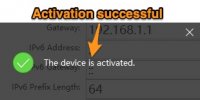
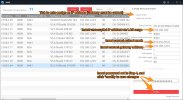
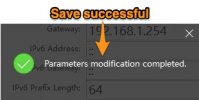

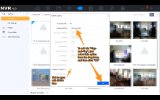
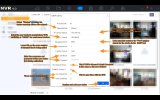
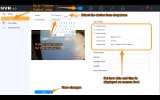


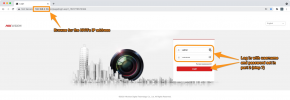
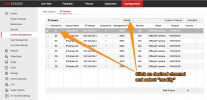
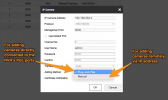
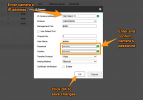


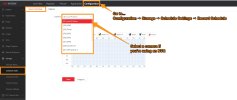
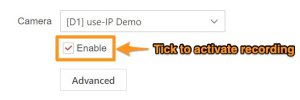






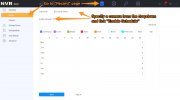
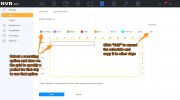
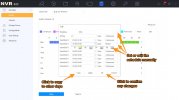
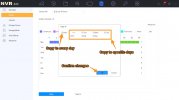
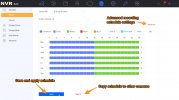
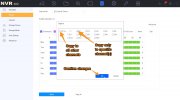
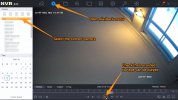
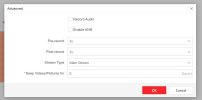
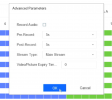

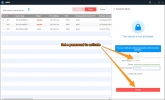
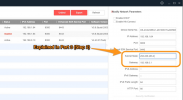
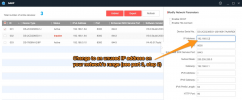
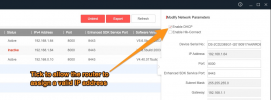
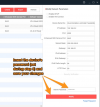
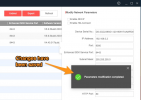
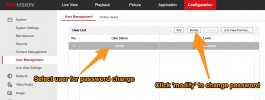
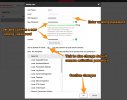
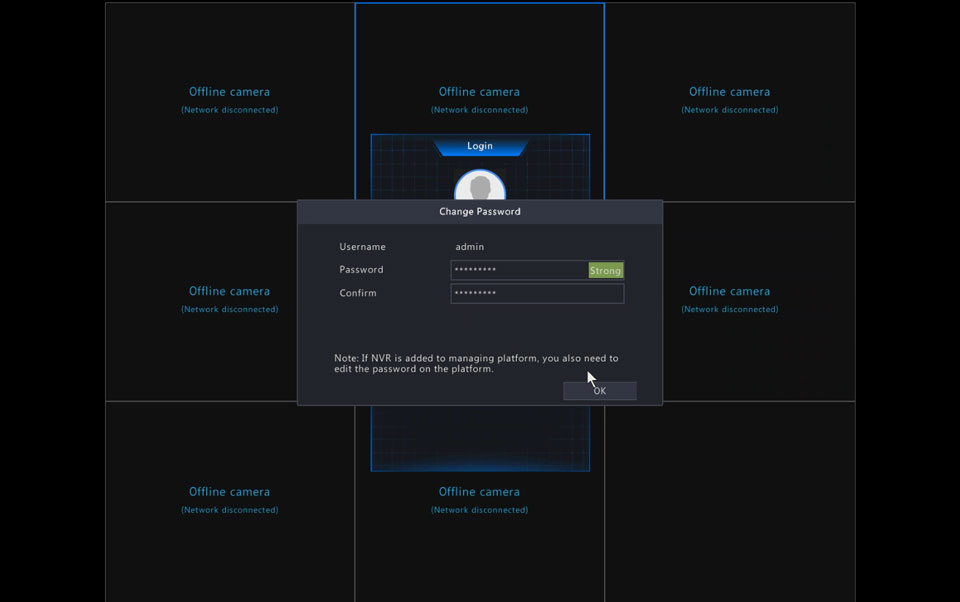
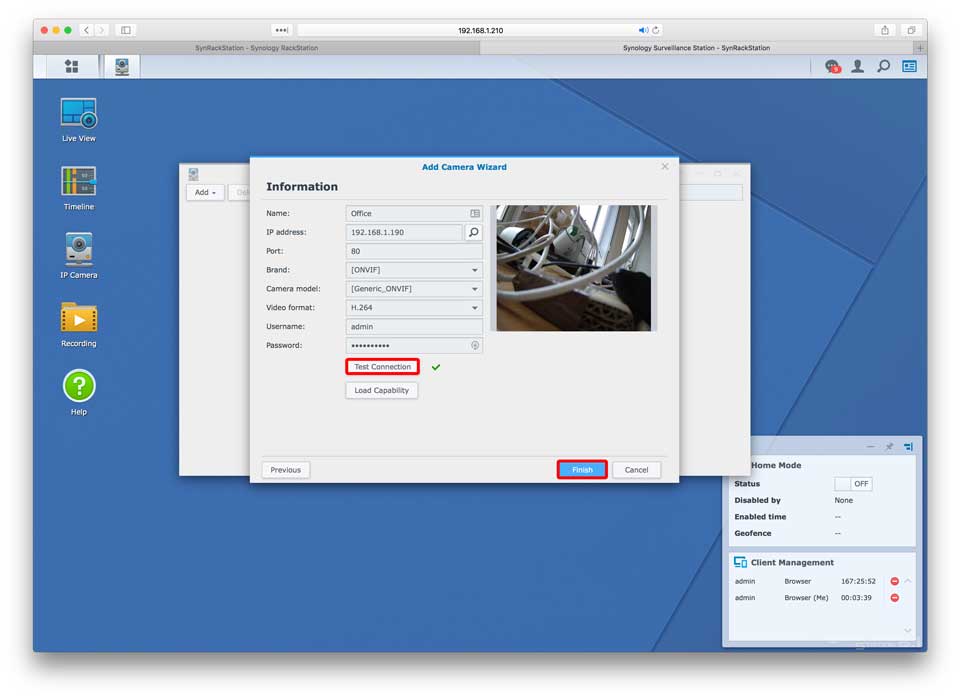
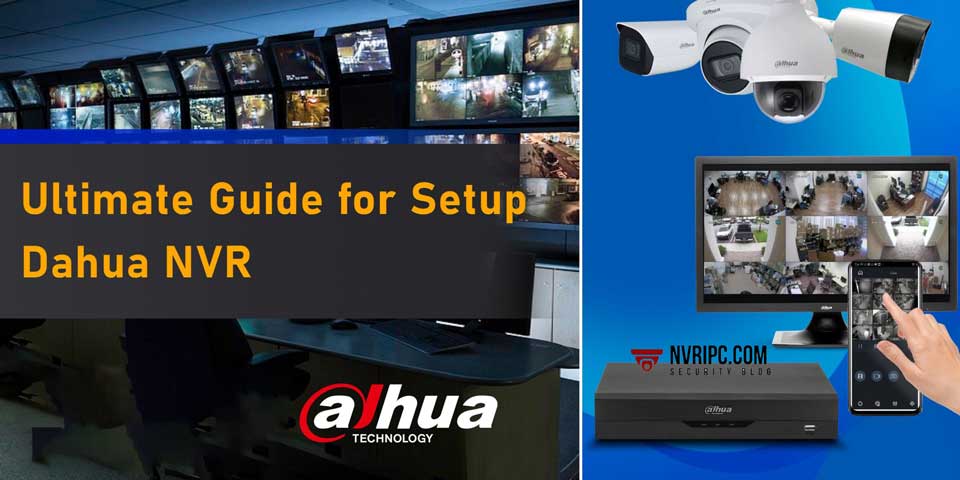
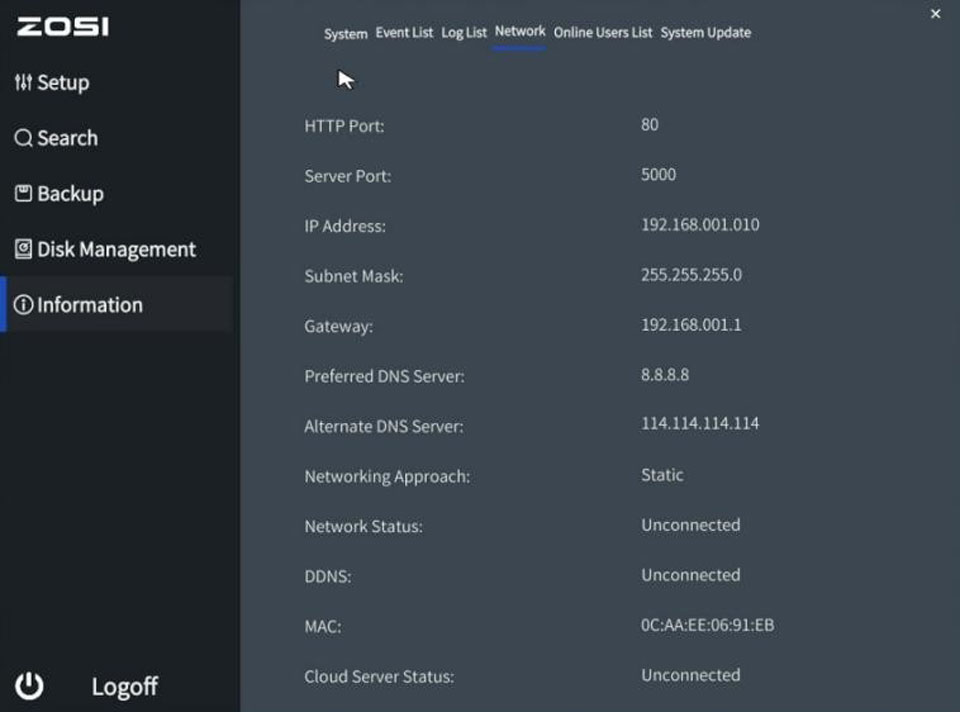
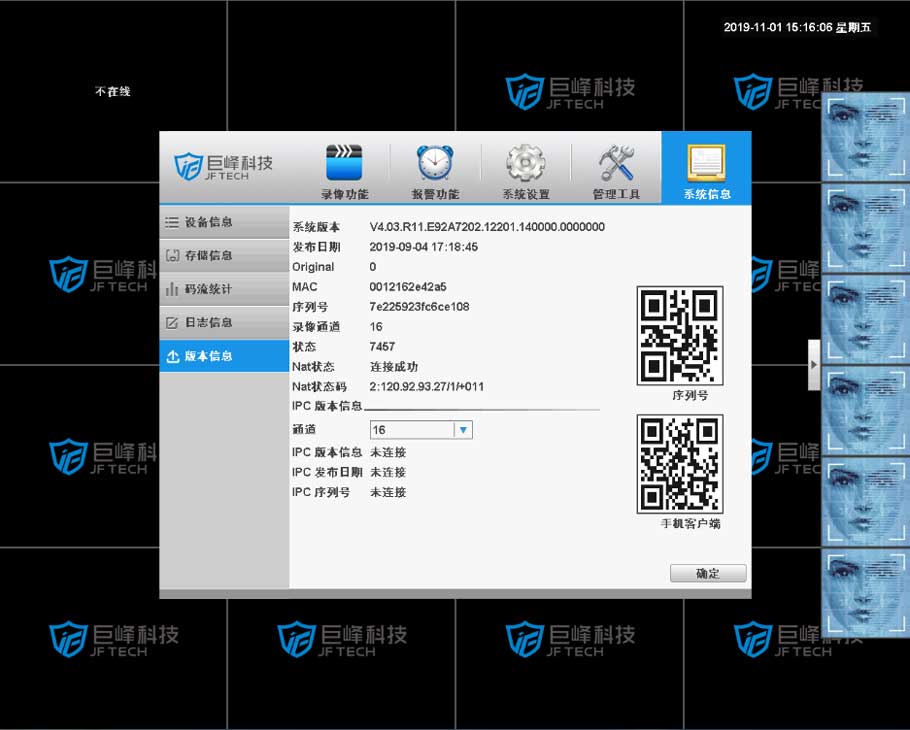


Add Comment